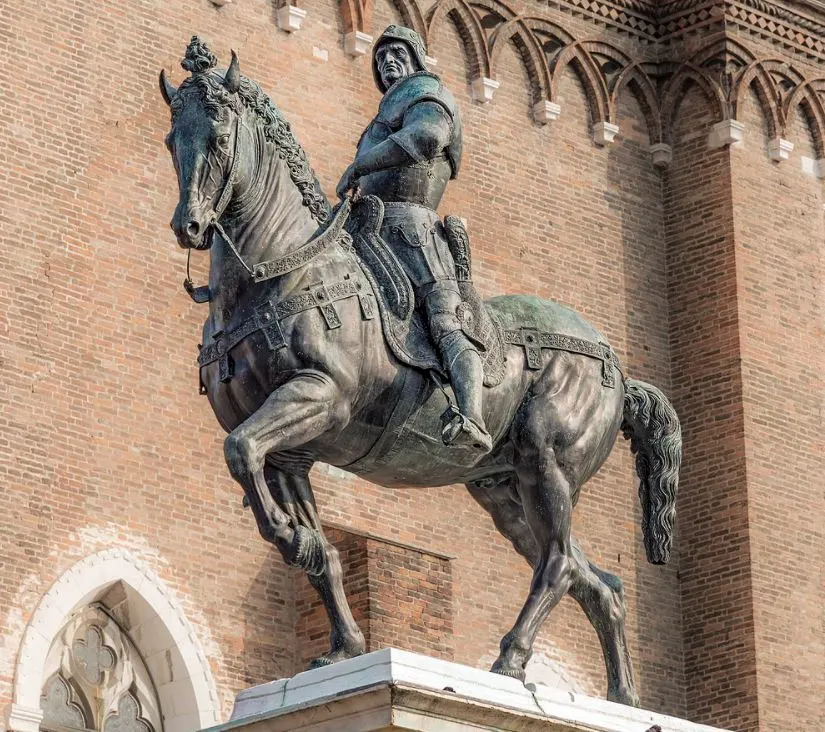In a city near Venice in northern Italy, we can find one of the most intriguing and influential statues ever created for a few particular reasons.
Let’s take a closer look at the Equestrian Statue of Gattamelata by Donatello, one of the artist’s most fascinating works and a revolutionary sculpture of the Renaissance.
1. It still stands where it was first installed in the center of Padua
The Equestrian Statue Of Gattamelata is situated on the Piazza del Santo in the historical center of Padua, a city in Northern Italy. This city is located in the Veneto region of Italy and belonged to the Republic of Venice at the time the statue was created halfway through the 15th century. It’s situated about 40 kilometers (25 miles) to the west of Venice.
It was created by early Renaissance sculptor Donato di Niccolò di Betto Bardi (1386-1466), better known as simply “Donatello.” He started to work on this commissioned in 1447 and even though the statue was completed in 1450, it wasn’t installed on the square until 1453.
What’s remarkable about this fascinating sculpture is that it still stands on the exact location that it was initially installed in 1453!

2. The statue depicts a famous Renaissance condottiere
The statue depicts a famous military leader of the Republic of Venice called Erasmo of Narni (1370-1443), a man who is better known by his nickname “Gattamelata” which means “honeyed cat.”
Even though it’s assumed that the Republic of Venice commissioned the statue in order to eternalize their mighty condottiere, It’s not that the man was that loyal to a particular region, though. He started out serving the Papal States and Florence initially before pledging his allegiance to Venice.
His statue was placed in Padua because he became podestà of this city in 1437, the highest civil office in cities in northern Italy during the Late Middle Ages and Early Renaissance.

3. It’s one of the most remarkable Renaissance statues for 2 reasons
Even though it wasn’t the first equestrian statue created since antiquity, (the Bamberg Horseman, for example, dates back to the 1230s) it’s the one statue that closely resembles the ideals of classical art. It’s clear that Donatello closely studied classical statues such as the Equestrian Statue of Roman Emperor Marcus Aurelius in Rome.
Apart from being the first statue to bring back the splendor of equestrian statues of antiquity, it’s also the earliest surviving equestrian statue that was created during the Renaissance.
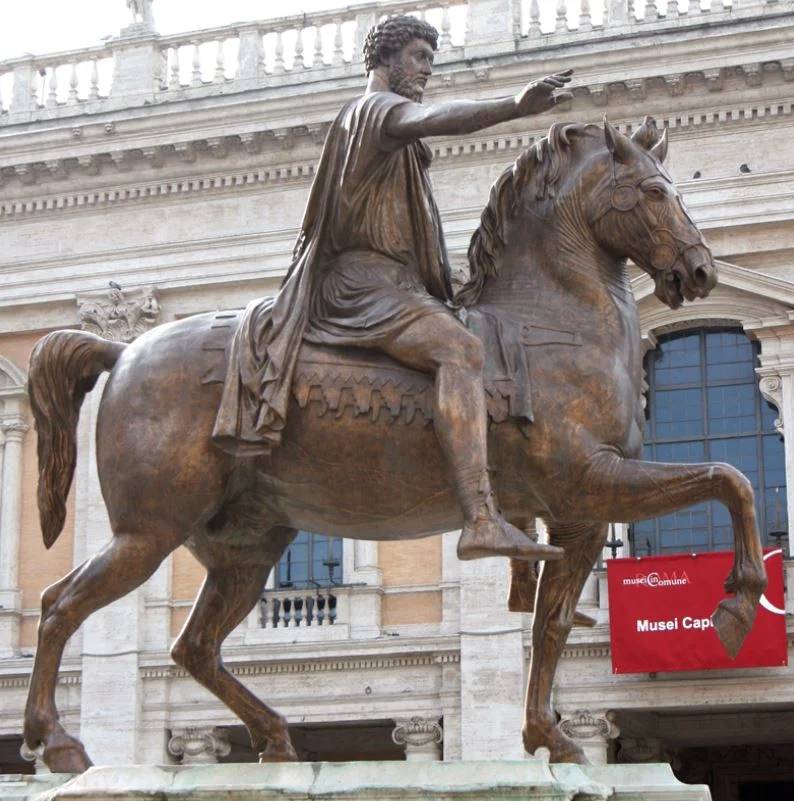
4. The statue depicts the horse and man in life-size
Even though the statue is heavily influenced by the ideals of classical art, there’s one crucial difference that makes this particular work of art substantially different.
The statue of Marcus Aurelius (which serves as one of many examples) was created to emphasize the importance of the emperor as both a political and military leader and the artist who created it did so by creating an oversized version of the man.
The Renaissance ideals of naturalism were used by Donatello to create a life-sized version of Gattamelata. His power is emphasized by his expression, symbolism, and posture. This was a completely different way of achieving the same effect.
The statue measures 340 x 390 centimeters (133.85 x 153.54 inches) with the base measuring 780 x 410 centimeters (307.08 x 161.41 inches).
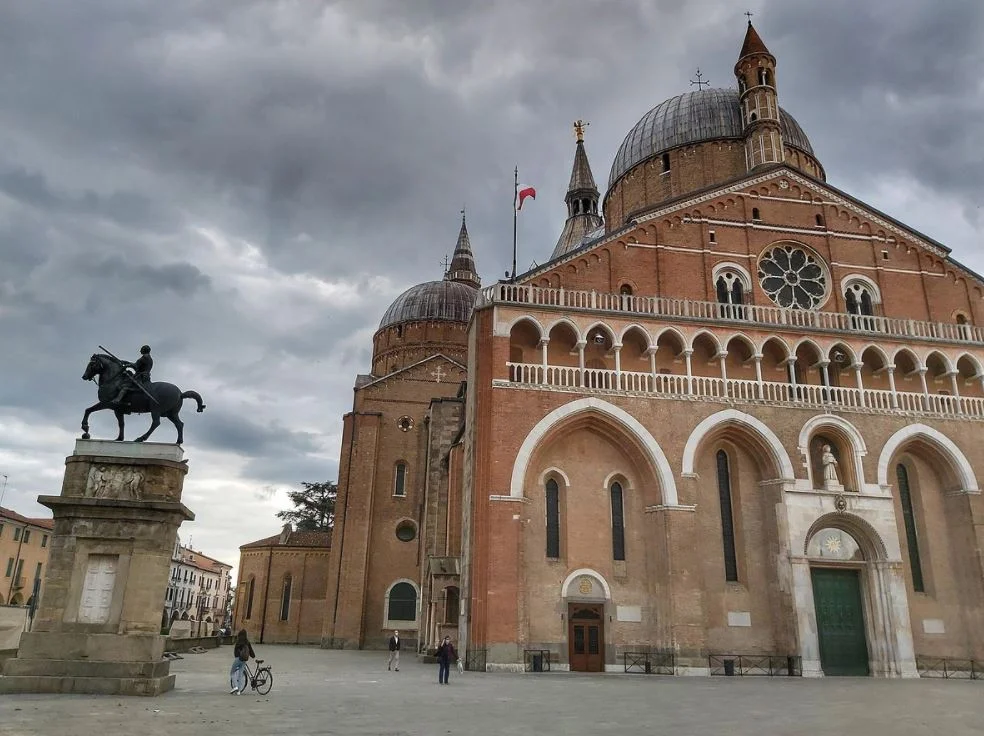
5. The depicted Gattamelata was much older when he passed away
Even though the real Gattamelatta (and his horse as well) was about the same size as the one depicted by Donatello, the man was already much older at the time of his death than during his military days.
The whole point was to portray the man as a successful military leader, so he was depicted at the height of his career. It wouldn’t have made sense to depict the man just before he passed away while he was already in his seventies.

6. Various military symbols hint at the man’s position
Even though Donatello didn’t emphasize the importance of the man as a military captain or Condottiero, he did include various symbols in order to reflect the man’s position. The most obvious ones are the baton he is holding and the long sword he is carrying.
The more subtle one is the canon ball below the horse’s front left hoof. This represents military advancements and the power of the army of the Republic of Venice under which Gattamelata served.
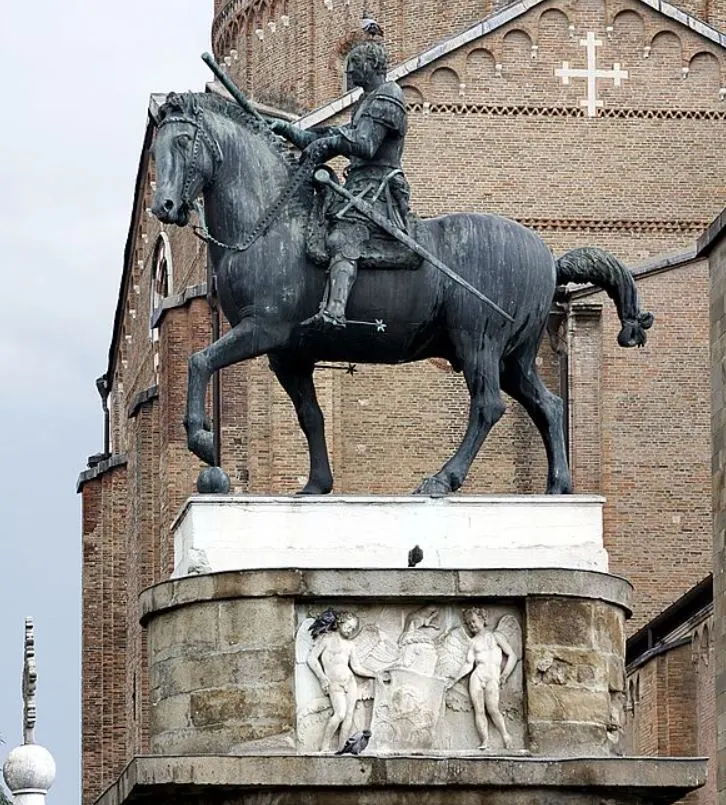
7. There are two reliefs on the pedestal under the horse
The horse rests on a huge pedestal which is adorned with two reliefs, one on each side. These reliefs also have symbolic meanings related to the military career of Gattamelata.
One of the reliefs depicts his coat of arms and features two putti, chubby male children often used in art, pointing at it. The other relief depicts battle armor with angels pointing at it.
Perhaps you already noticed but this pedestal also has two doors. These doors are fake and symbolize the gates to the underworld, a reference to the man’s death, even though he was never buried here.

8. It was created using a particular casting technique
The statue was cast in bronze using a particular technique that has been used for thousands of years, the oldest example being an amulet dating back to 6,000 years ago from the Indus Valley Civilization.
This technique is referred to as “lost-wax casting” a method in which a metal sculpture is cast from an existing sculpture. This means that Donatello created an original sculpture and the bronze version, which was placed in the square in Padua, was cast from this.
This technique was pretty common in Europe until the 18th century until the more efficient piece-molding method came to replace
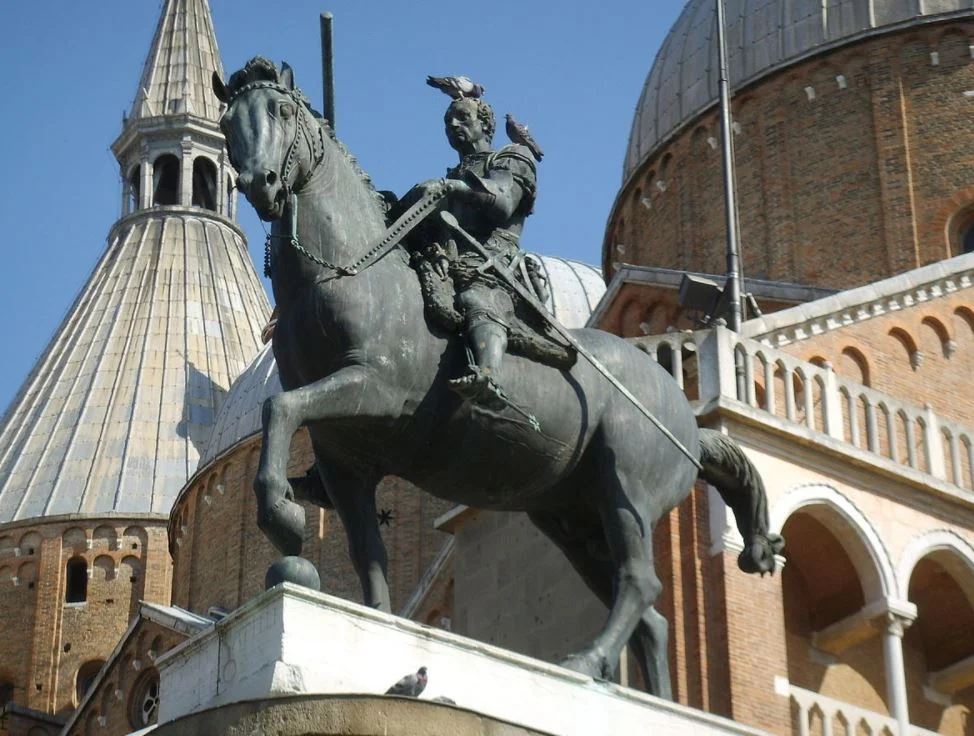
9. It served as a source of inspiration for Leonardo da Vinci
While Donatello was influenced by ancient sculptures, his magnificent equestrian statue of Gattamelata became the inspiration for some of the most renowned Renaissance artists in history, including Leonardo da Vinci.
During his period in Milan between 1482 and 1499, da Vinci’s patron, Duke Ludovico Sforza, had plans to create the largest equestrian statue in the world in honor of his father, Francesco Sforza.
While the statue was never completed, many of the preparatory drawings made by Leonardo survived and have been used to create sculptures all across the world, including a 2.5-meter (8 feet) bronze version in his hometown of Vinci.
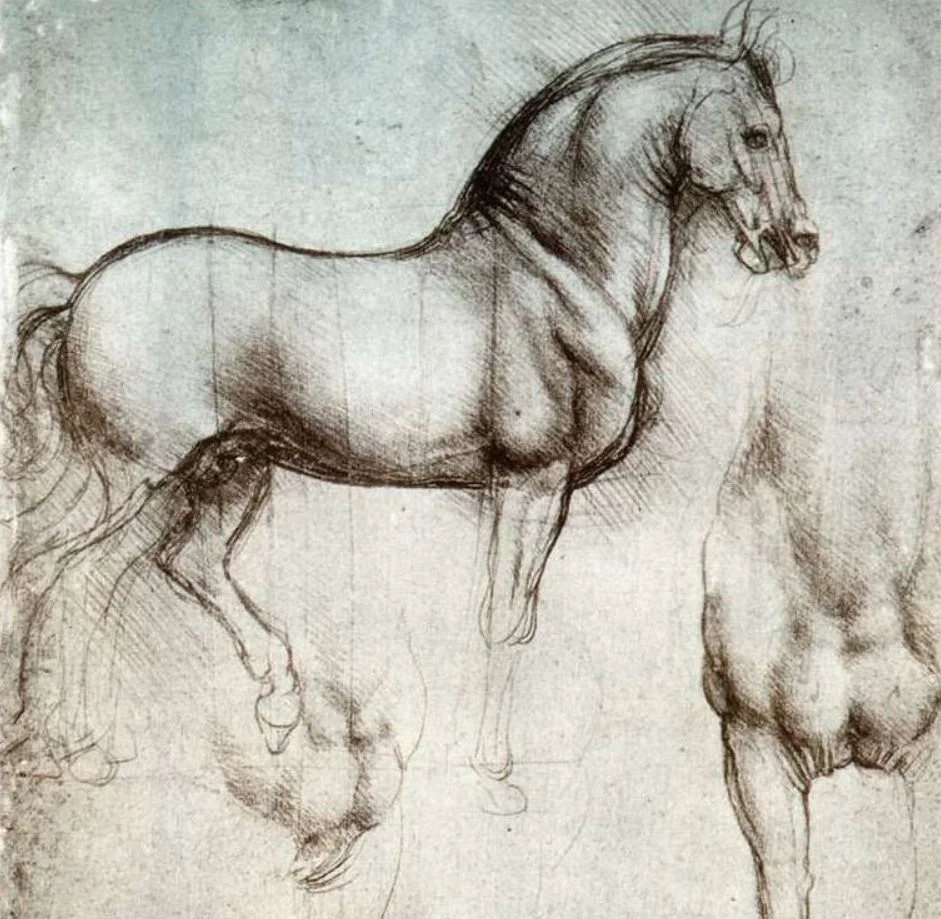
10. It became the inspiration for honoring multiple military leaders
The second fascinating equestrian statue was sculpted by Leonardo da Vinci’s master Andrea del Verrocchio between 1480 and 1488. The Equestrian statue of Bartolomeo Colleoni is located in “Campo Santi Giovanni e Paolo” in Venice and depicts another military leader in all his might.
Da Vinci and his master weren’t the only artists who found inspiration in Donatello’s masterpiece, as it became the source of inspiration for dozens of equestrian statues depicting military leaders all across Europe!
